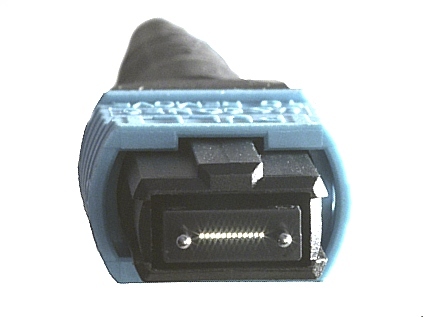Often abbreviated as MPO, Multi-fiber Push On is a type of optical connector that has been the primary multiple fiber connector for high-speed telecom and data communications networks. It has been standardized within the IEC 61754-7 and TIA 604-5.

MPO connectors are commonly used in HPC or high-performance computing labs, enterprise data centers, and in cloud data centers. Over the years, MPO connectors have evolved to support a wider range of applications and system packaging requirements. Originally a single-row 12-fiber connector, there are now eight and 16 single-row fiber types that can be stacked together to form 24-, 36-, and 72-fiber connectors using multiple precision ferrules. But the wider row and stacked ferrules have had insertion loss and reflection issues due to the difficulty of holding alignment tolerances on the outer fibers versus the center fibers.
Optical loss budgets and the number of connections between active equipment types affect the choice of premium or standard MPO connectors. For example, telecom infrastructure connectivity systems usually have many more passive optical connections versus newer cloud datacenters that have mostly short intra-rack and intra-row between just two devices. Cloud data center racks and row of racks have higher density packaging systems that leave much less space for connector plugs versus telecom wiring cabinets and racks. So there are mini-MPO and micro-MPO connector housings to compete against the smaller MXC housing.
Industrial automation systems and datacenters have benefitted from newer designs using circular and rectangular plastic over-shells. Mining and military use MPOs embedded inside circular metal shells. There are many newer fiber types, such as 10G performance MMF OM4 that use color-coded housings such as aqua to more easily discern within the rack.
MPO connectors will continue to thrive in many market segments while newer multi-fiber connector will expand their usages, product features, and application options.
Source: Connector Tips
Advertisement
Learn more about Electronic Products Magazine





